Artnet News Pro
We Went Behind the Scenes With the Art Dealers Looking to Make Millions in Monaco, the Elite City-State Smaller Than Central Park
The annual art fair—plus a wave of new pop-ups—fills a void left by the dearth of museums.
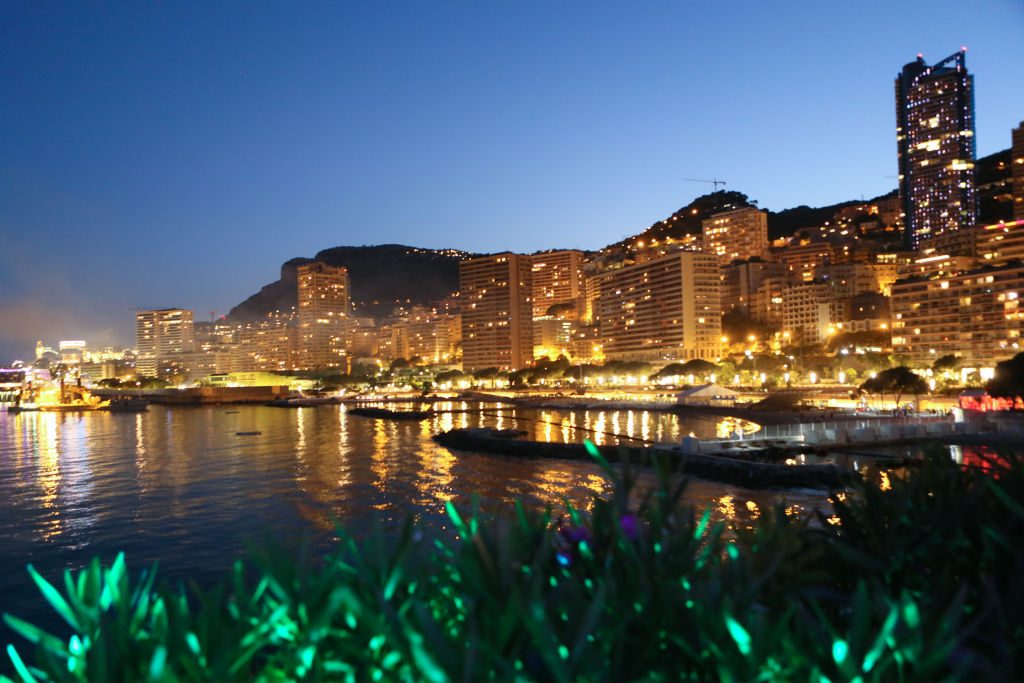
The annual art fair—plus a wave of new pop-ups—fills a void left by the dearth of museums.

It’s no small wonder why, in the upper tiers of the art industry, the European city-state of Monaco is a haven. The minuscule principality, which is smaller than Central Park and known for its fast cars, lack of tax, and decadent casino, is at its core a beloved hideaway for the wealthy, a place to park the super yacht for a while on the way down the Cote d’Azur.
“It’s mandatory to be in Monaco in summer,” Antoine Lebouteiller, Christie’s director of Impressionist and Modern art in Paris, told Artnet News. Behind us, potential clients examined diamonds at the auction house’s summer showroom at Cipriani restaurant while suited servers shuffled by with plates of burrata.
Just up the hill from where we stood, Sotheby’s was changing over the art in its new gallery not far from Hauser & Wirth’s freshly minted space, where a recently installed Louise Bourgeois show opened last month and was largely sold out already. Berlin dealer Johann König was also within a stone’s throw, trying out a new format by hanging rostered artists’ works in a luxury interior design showroom.
The Art Monte Carlo fair had just opened to VIPs—now in its fifth year, the event is a veteran among a burgeoning blue-chip art scene of newcomers.
For a newly mobile art world that is looking for places to gather in the absence of the typical summer tentpoles like Art Basel (which has moved to September), Monaco is ideal.
“Monaco is sort of public-private,” one art-world insider told me. “It is somewhat confidential here.” In other words, never mind the back room when you’ve got a place like this—it is, essentially, an entire city-state that doubles as a VIP lounge.

The Arte Monte Carlo fair at the Grimaldi Forum with a work by Xavier Veilhan. Courtesy Perrotin. Photo: Julien Gremaud.
More than almost any other city, Monaco has its limits—which makes it even more desirable for the glitterati. Real estate is hard to come by, even for the super-rich. Due to the sheer lack of space, Monaco is quite literally stacked on top of itself, hanging off a coastline densely jammed by 1980s high-rise apartments—a skyline that one Swiss collector described to me as “totally vulgar” from across the table at a dinner (they attend the art fair annually anyway).
Even the wealthiest of collectors have apartments smaller than you might expect here—but a Monaco address is a precious thing. “They’re building on the ocean,” auctioneer and Artnet News columnist Simon de Pury said from the Cipriani rooftop. Within view were a half-dozen cranes building Renzo Piano’s $2.3 billion “land reclamation” project, which will add 15 acres of fake earth to Monaco for luxury commercial and residential spaces.
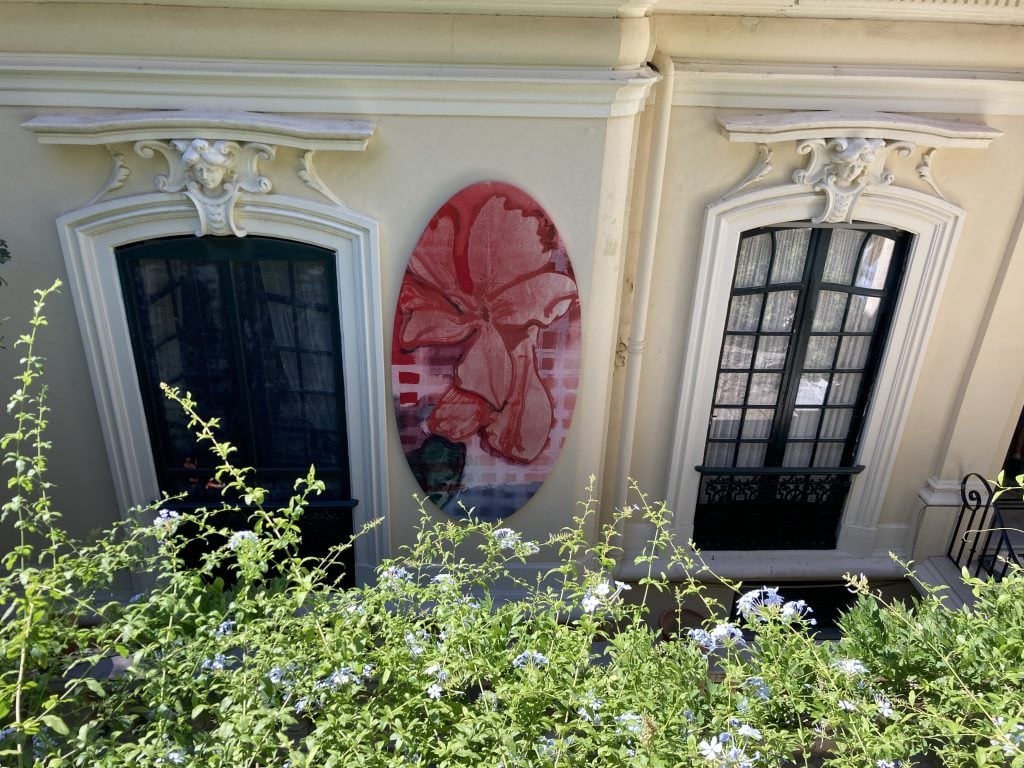
Artist Matthew Lutz-Kinoy’s monumental painting hangs on the exterior a villa owned by Kamel Mennour for a private brunch. Photo: Kate Brown
For dealers like London- and Paris-based dealer Kamel Mennour, who has long had a summer home up the coast in France, the lack of quality space is partially what keeps him from opening a gallery next door in Monaco. He and his family welcomed friends and collectors to their breathtaking 19th-century villa, which was hung with works by gallery artists, including a mobile by Petrit Halilaj that was gently suspended above a table brimming with fresh hors d’oeuvres, near a pastel-on-paper work by French artist Camille Henrot, who attended Mennour’s brunch party with her family. Upstairs, a new painting by Ugo Rondinone from his sunset series was perfectly complimented by a powder blue bedroom.
Mennour and his wife and children roamed around as their guests looked at the works, most of which were for sale. “We were supposed to be traveling around now, but because of COVID, I thought to try this instead,” he said of the inventive format.
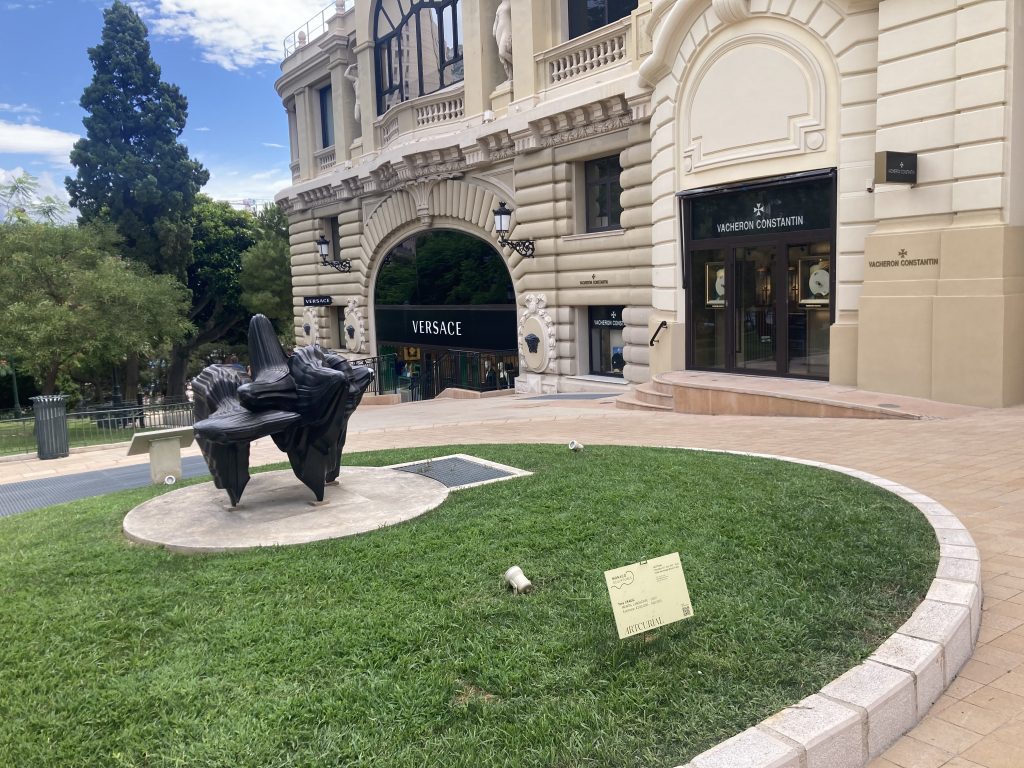
Tony Cragg’s sculpture on view outside of the Casino Monte-Carlo, as a preview to Artcurial’s sale this week at the Hermitage Hotel. Photo: Kate Brown
Back in Monaco, experimentation seemed to be the prevailing mood at Sotheby’s and Christie’s new projects. Both opted for cross-category offerings: at Sotheby’s, luxury handbags (including several rare Grace Kelly bags from Hermès, named after the princess who wore them to hide her belly while pregnant in Monaco, priced at up to €300,000) stood across from a large Botero work listed for €1 million to €1.3 million.
“It’s all about lifestyle,” said Olivier Fau, Sotheby’s head of private sales in France. “We want to show our clients that we are present and tailor our diverse offerings to them.”
The gamble seemed to pay off. At Christie’s, a new European client bought a Picasso for around €250,000 off the wall of the restaurant, which hung above the cash register.
Still, given the lack of space in the city-state, an ephemeral format like an art fair is a solid option for the larger bell curve of art sellers. The boutique Art Monte Carlo, which can be circulated almost entirely in an hour (it shrunk as a result of the pandemic, from 73 dealers last year to just 27 this year), offered dealers a chance to get face time with a strong list of VIPs, including collectors David Nahmad, Patricia Marshall, and Eskandar and Fatima Maleki, to name a few.
The appeal was clear given the presence of newcomers White Cube, Perrotin, Hauser & Wirth, and Pace. (“Something is different this year,” said dealer Florence Bonnefous from the Air de Paris gallery, a long-time participant in the fair, as she motioned toward the blue-chip galleries. She had just closed the sale of a 2010 work by Dorothy Iannone, for €20,000 to a Monaco collector.)
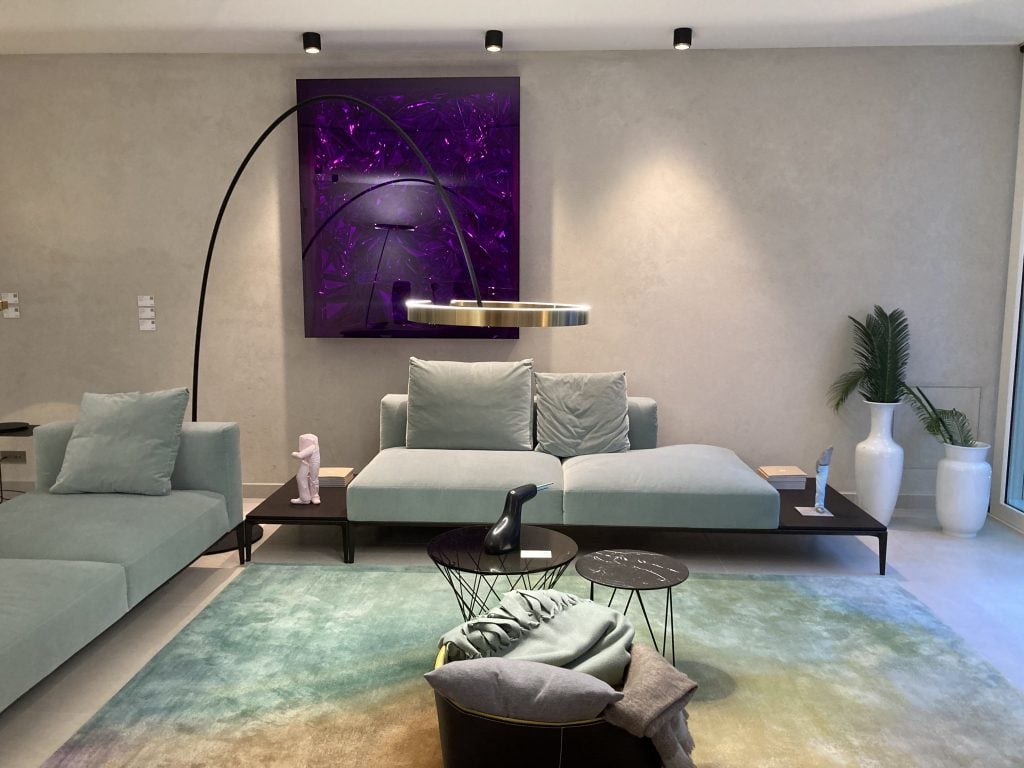
An Anselm Reyle work on view as a part of Galerie König’s collaboration with Lenzwerk at Lenzwerk showroom in Monaco. Photo: Kate Brown
Throughout the fair, there were signs of caution, with booths dominated by group presentations and very few solo booths with overt conceptual statements. After a year of upheaval, no one was to keen to try anything too bold.
Monaco, it seems, is for selling—not for branding or courting critics. Perrotin sold a large painting by Hernan Bas for €200,000, and Turin gallery Franco Nero sold works by Robert Mapplethorpe and Sam Falls in the first two days of the fair. Nathalie Obadia, another first-timer, sold a Mickalene Thomas for an undisclosed price, and two works by Fiona Rae for between €50,000 and €100,000 each, among others.
London’s Thomas Gibson, another first-timer, placed a Giacometti drawing of Igor Stravinsky with a collector for $58,000—surely helped by the major retrospective of the artist that took place in the same building. The dealer was there alongside a little cohort of Modern art dealers, including Dickinson, who were attending for the first time. “With TEFAF canceled, there are many clients we have not been able to see for a while, so we decided to come to them,” the gallery’s Aurélie Maw told Artnet News.
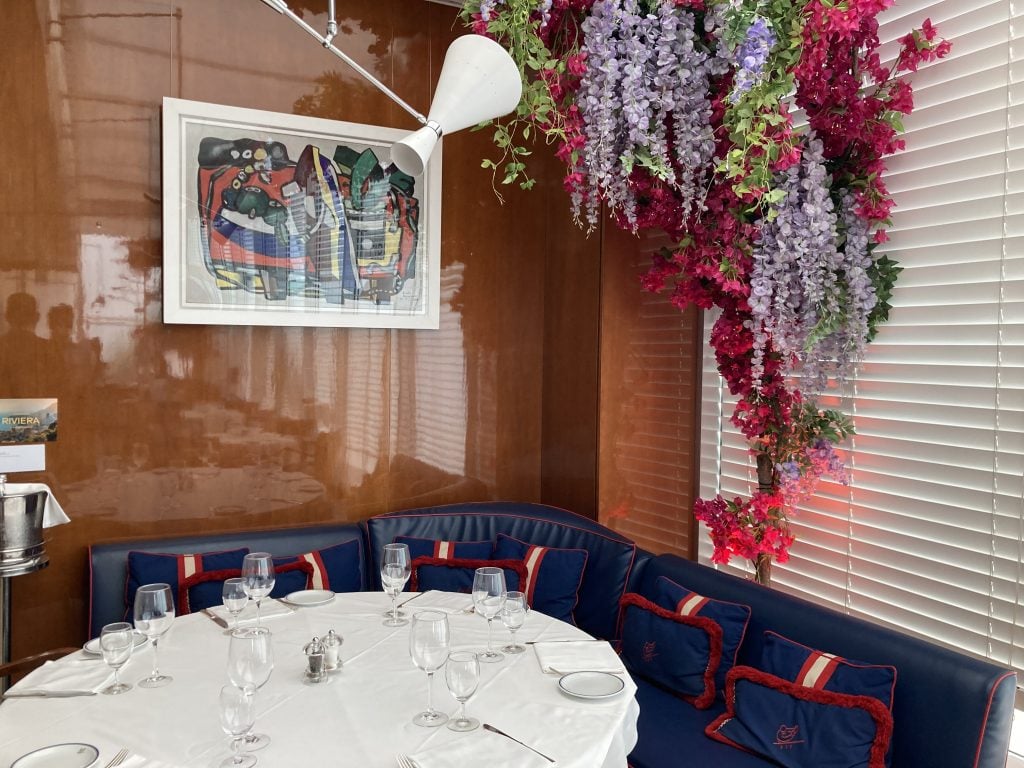
A view of Christie’s presentation at Cipriani in Monaco. Photo: Kate Brown
Back in town, off the steps of the famous and historic Monte Carlo Casino, the French auction house Artcurial arranged the display of several outdoor sculptures, including a Tony Cragg—its price range of €200,000 to €300,000 listed right there on a panel—that will be auctioned off on July 22 at the Hermitage Hotel, just past the casino.
In Monte Carlo, everything is just around the corner, reachable by unfathomably narrow sidewalks—this is the city of the Grand Prix race, but it is also a reminder that this is not a place for “normal people,” as one art-world insider told me.
“We have to bring works to our public,” said Mark Armstrong, senior director of Sotheby’s Monaco. Here, “public” has a very particular definition. Everything, from the top of the cliffs to the new ocean-top properties, is designed for a handful of the ultra-wealthy, not the public at large—who are all but absent.